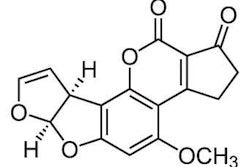
I’ve frequently mentioned my dogs and cats in writings and presentations, and many industry members have heard or read about my small chicken flock as well. However, fewer people know about my penchant for reptiles. I recently added to my collection of snakes, lizards and turtles by adopting three sulcata tortoises over the past year. What I’ve learned about feeding these guys has caused me to reflect on how we feed our more conventional pets, particularly dogs and cats.
Sulcata tortoises can live many, many decades and reach weights of 150 pounds or more, so nutrition is critical to long-term health. However, their nutritional requirements appear unique, if not counterintuitive. Originally from the southern Saharan Desert, sulcatas appear to thrive on grasses, weeds and other plant materials that most classically trained animal nutritionists could only characterize as poor quality.
A plane of nutrition that might be typical for most pets (reasonably rich in energy, protein, etc.) can cause permanent adverse effects in sulcatas, including a shell deformity called pyramiding that does not occur in the wild. So, in attempting to meet their tortoises’ nutritional needs, many owners are, in fact, probably overdoing it.
I’ve found a number of commercial diets on the market intended for feeding sulcatas and other tortoises. From my assessment, some appear much more nutritionally appropriate than others. Regardless, a few expressly or implicitly claim to be “complete and balanced,” even though under the Association of American Feed Control Officials Model Regulations for Pet Foods and Specialty Pet Foods, such claims would require compliance with recommendations of a recognized nutritional authority.
For my dogs and cats, I have the AAFCO Dog and Cat Food Nutrient Profiles, and for my chickens there is a National Research Council (NRC) publication. For sulcatas? Nothing.
There is much discussion of what to feed tortoises on the Web but not a lot specifically about nutritional requirements per se. For example, it is recognized that they need calcium and vitamin D but not too much of either. However, just how much is enough but not in excess is vague, either in terms of percent of diet or daily amounts per animal at a given weight and age.
Do I rely on what I know about requirements of these nutrients in other species? Given sulcatas’ unique dietary habits, that may or may not be appropriate. So, how do we know that the amounts added in commercial formulations are correct? Without a consensus of experts citing scientific studies in the intended species, we simply do not know for sure. As a result, I feed my sulcatas the best I can (grass hay, yard trimmings, various items from the produce market and small amounts of commercial products and supplements) and hope I’m not doing any long-term harm.
Compared to feeding my dogs, cats and chickens, the effort needed to prepare food for my tortoises takes a lot more time and thought. I’ve read a lot of disparagement about the nutritional merits of the AAFCO Dog and Cat Food Nutrient Profiles over the years and even calls to get rid of any allowance for “complete and balanced” claims for commercial petfoods. To me, that would be a big mistake. Without a nutritional standard upon which to compare, commercial petfoods would revert to the 1960s, where companies could tout claims of nutritional superiority even though the products were, in fact, grossly deficient.
Do animal nutritionists today know everything there is to know about dog and cat nutrition to the extent that a company can unerringly promise that a food will meet 100% of the needs of 100% of the animals to which it’s fed? I hope not. Nutritional science is a never-ending quest for information, and there will continue to be improvements and refinements for many years to come. However, as evidenced by colonies of animals doing well while being fed the same diet for many generations over decades, we have a decent idea of what constitutes nutritional adequacy. So, to help guide the purchaser of commercial petfoods, there needs to remain a means to distinguish the reasonably complete and balanced petfood from the one that’s definitely not.
For those pet owners who wish not to feed a commercial diet, home formulation to meet a nutritional standard is still very prudent. For that purpose, if not the AAFCO profiles, then reliance on the NRC Nutrient Requirements of Dogs and Cats may be most suitable.
Does every single meal have to meet NRC recommendations? No, as long as on average the meals complement each other nutritionally over a reasonable amount of time (e.g., some meals may not have appreciable calcium but others more than the minimum requirement so they balance out). The risk of this practice is that the incomplete meal becomes the animal’s preference and is eventually fed more often than not.
Another potential problem is “recipe drift,” where over time ingredients in a diet originally formulated to be complete and balanced are added, removed or adjusted to appeal to the animal’s likes or preparer’s convenience, but to the point where it is no longer balanced. As long as these factors are controlled, there should be no issue.
I just wish there was an NRC publication for tortoises!


















